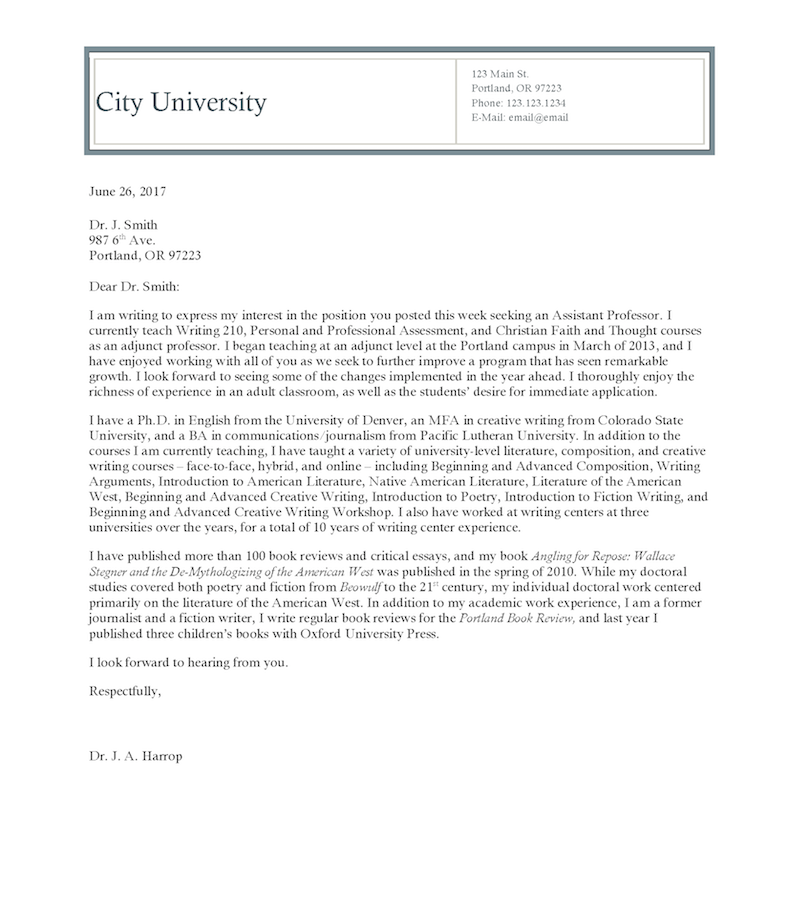27

While email is a convenient and efficient way to communicate, the business letter is still a preferred form of communication in more formal situations. When you write a business letter, whether you send it through the postal mail or as an email attachment, be sure to hold to the following expected standards:
“I’m often self-conscious of how my email could come across. I never want it to be, or sound, intimidating. I’ve decided if I can include a lot of ‘!!!’ or ‘:)’ then it’ll quickly break that mold. But then again, I wonder if I am breaking some type of writing rule. :)” Emily Call, Associate Director of Admissions
- Know your purpose. Are you writing to inform, persuade, entertain, or remind your audience? Are you able to state your purpose in a single sentence? What evidence will you provide to support your single-sentence purpose? How will you ensure that your letter holds to the simple math of topic sentence + evidence = paragraph and introduction + body paragraphs + conclusion = essay?
- Know your audience. If you aren’t sure what your audience looks like, lives like, or sounds like, do the necessary research until you have a better sense. A blind letter written to a general audience will rarely achieve what its writer intends. Do your homework; it will always pay off.
- Select a professional letterhead. Years ago, employees were reliant on their employer for permission to use the company letterhead. And while professional etiquette still suggests that you seek permission before usurping someone else’s design or name, feel free to create your own. A simple design using your initials or last name can mean the difference between a letter that appears homemade and poorly planned and a letter that is professional, confident, and compelling.
- Use a standard format and font. A business letter is typically in 12 point Times New Roman or Cambria font, with 1” margins, single-spaced except for extra spaces between paragraphs, and presented in a block format:
Sample Letter:
Sample Letter in text-based format https://goo.gl/DXrUWv

Sample Business Letter - Be professional. Avoid text-inspired abbreviations, personal topics, and emotional outbursts. Instead maintain a keen sense of purpose, audience, voice, and clarity.
- Write clearly and succinctly. A business letter is not the time for lengthy stories, lead-ins, or discussions. State your purpose, provide your evidence, and suggest further action or communication. Save the longer discussions for an in-person visit.
- Be persuasive. Keep in mind that the purpose of any business letter is to persuade an audience to think differently, take action, or consider change. What claim will you make and what appeals will you use to persuade your audience? What evidence will you provide to support your claim? How will you ensure that your voice is both humble and authoritative, open-minded and confident?
- Expect a response. Every business letter should end with a call to action, whether that call is for further discussion, a different direction, or even just a new line of thinking. How will your letter request a response without sounding presumptuous or overbearing? How can you present yourself in such a way that your audience is intrigued by your ideas and interested in future considerations?
Exercises:
Exercise 27.1
Locate a business letter you have sent and consider it in light of each of the following standards. How does it fare?
- Know your purpose.
- Know your audience.
- Select a professional letterhead.
- Use a standard format and font.
- Be professional.
- Write clearly and succinctly.
- Be persuasive.
- Expect a response.
Exercise 27.2
Find a business letter you have received from someone else for a school or work-related situation. Weigh the letter in light of each of the following standards. How does it fare?
- Know your purpose.
- Know your audience.
- Select a professional letterhead.
- Use a standard format and font.
- Be professional.
- Write clearly and succinctly.
- Be persuasive.
- Expect a response.
Exercise 27.3
Consider something you hope to accomplish or change. To whom should you write a business letter to get a conversation started? Should you address the letter to more than one person? Write the letter according to the standards listed in this chapter.
